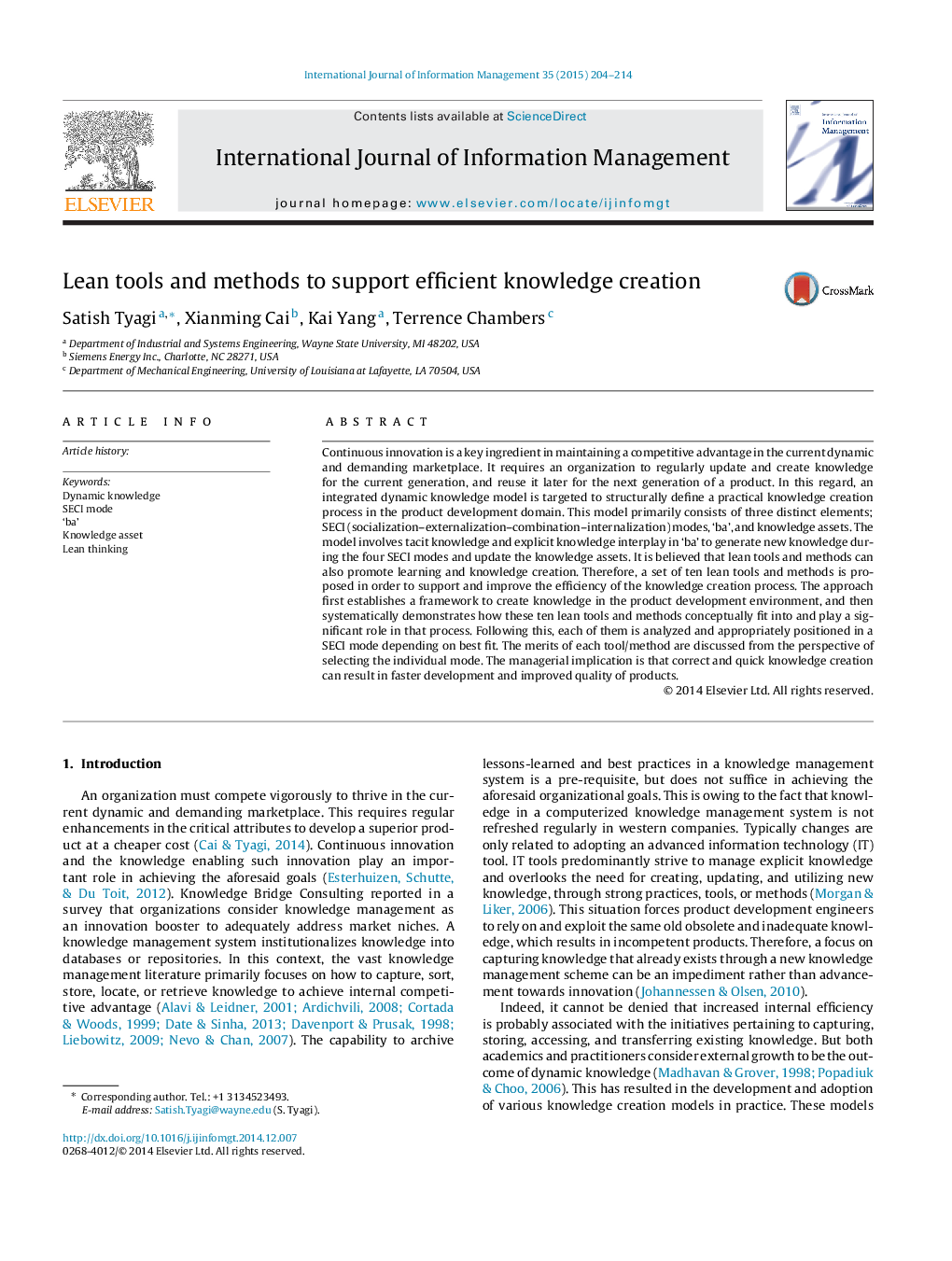| کد مقاله | کد نشریه | سال انتشار | مقاله انگلیسی | نسخه تمام متن |
|---|---|---|---|---|
| 7429112 | 1483202 | 2015 | 11 صفحه PDF | دانلود رایگان |
عنوان انگلیسی مقاله ISI
Lean tools and methods to support efficient knowledge creation
ترجمه فارسی عنوان
ابزار و روش های ناب برای حمایت از ایجاد دانش کارآمد
دانلود مقاله + سفارش ترجمه
دانلود مقاله ISI انگلیسی
رایگان برای ایرانیان
کلمات کلیدی
موضوعات مرتبط
علوم انسانی و اجتماعی
مدیریت، کسب و کار و حسابداری
سیستم های اطلاعات مدیریت (MIS)
چکیده انگلیسی
Continuous innovation is a key ingredient in maintaining a competitive advantage in the current dynamic and demanding marketplace. It requires an organization to regularly update and create knowledge for the current generation, and reuse it later for the next generation of a product. In this regard, an integrated dynamic knowledge model is targeted to structurally define a practical knowledge creation process in the product development domain. This model primarily consists of three distinct elements; SECI (socialization-externalization-combination-internalization) modes, 'ba', and knowledge assets. The model involves tacit knowledge and explicit knowledge interplay in 'ba' to generate new knowledge during the four SECI modes and update the knowledge assets. It is believed that lean tools and methods can also promote learning and knowledge creation. Therefore, a set of ten lean tools and methods is proposed in order to support and improve the efficiency of the knowledge creation process. The approach first establishes a framework to create knowledge in the product development environment, and then systematically demonstrates how these ten lean tools and methods conceptually fit into and play a significant role in that process. Following this, each of them is analyzed and appropriately positioned in a SECI mode depending on best fit. The merits of each tool/method are discussed from the perspective of selecting the individual mode. The managerial implication is that correct and quick knowledge creation can result in faster development and improved quality of products.
ناشر
Database: Elsevier - ScienceDirect (ساینس دایرکت)
Journal: International Journal of Information Management - Volume 35, Issue 2, April 2015, Pages 204-214
Journal: International Journal of Information Management - Volume 35, Issue 2, April 2015, Pages 204-214
نویسندگان
Satish Tyagi, Xianming Cai, Kai Yang, Terrence Chambers,
